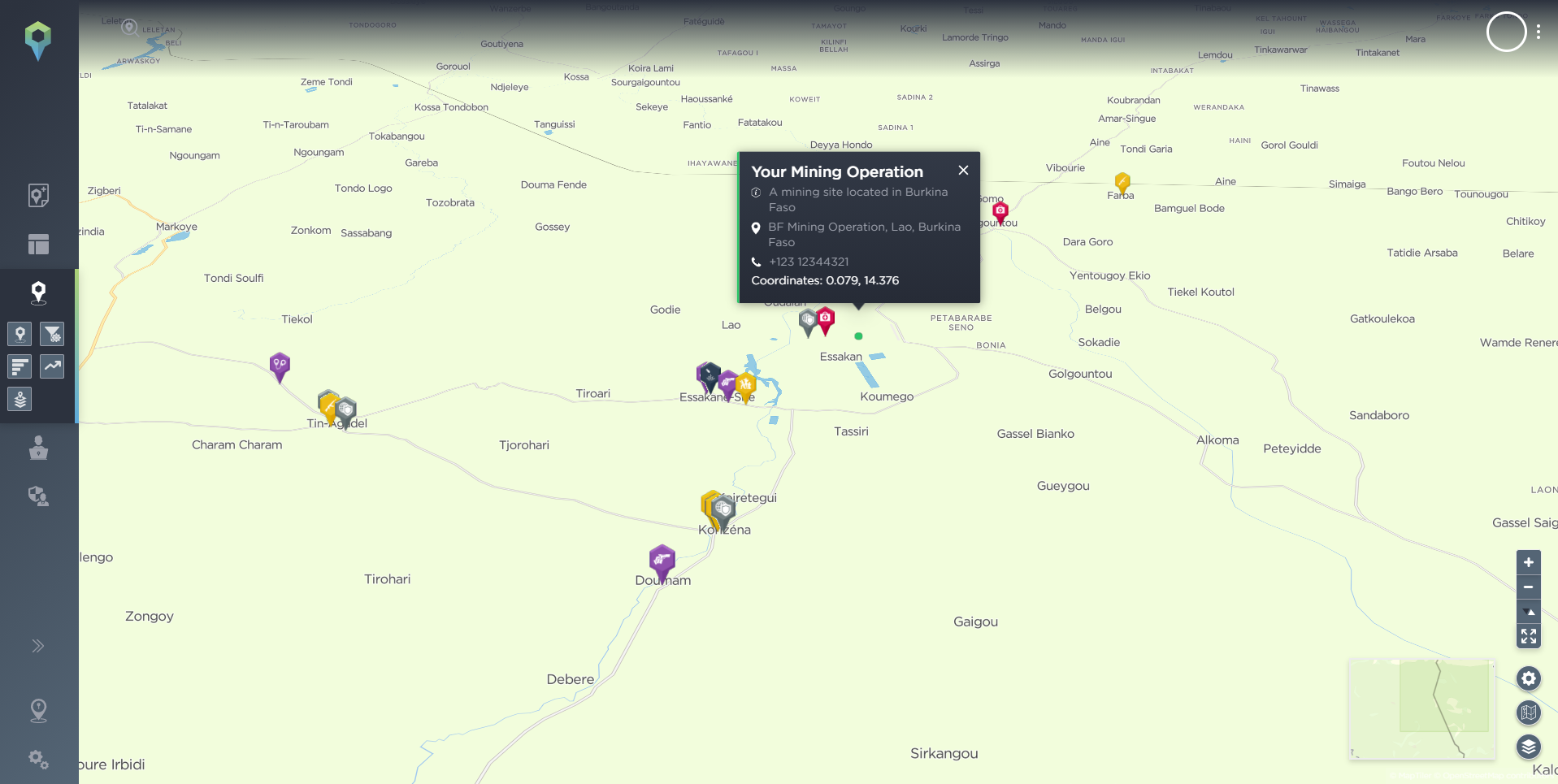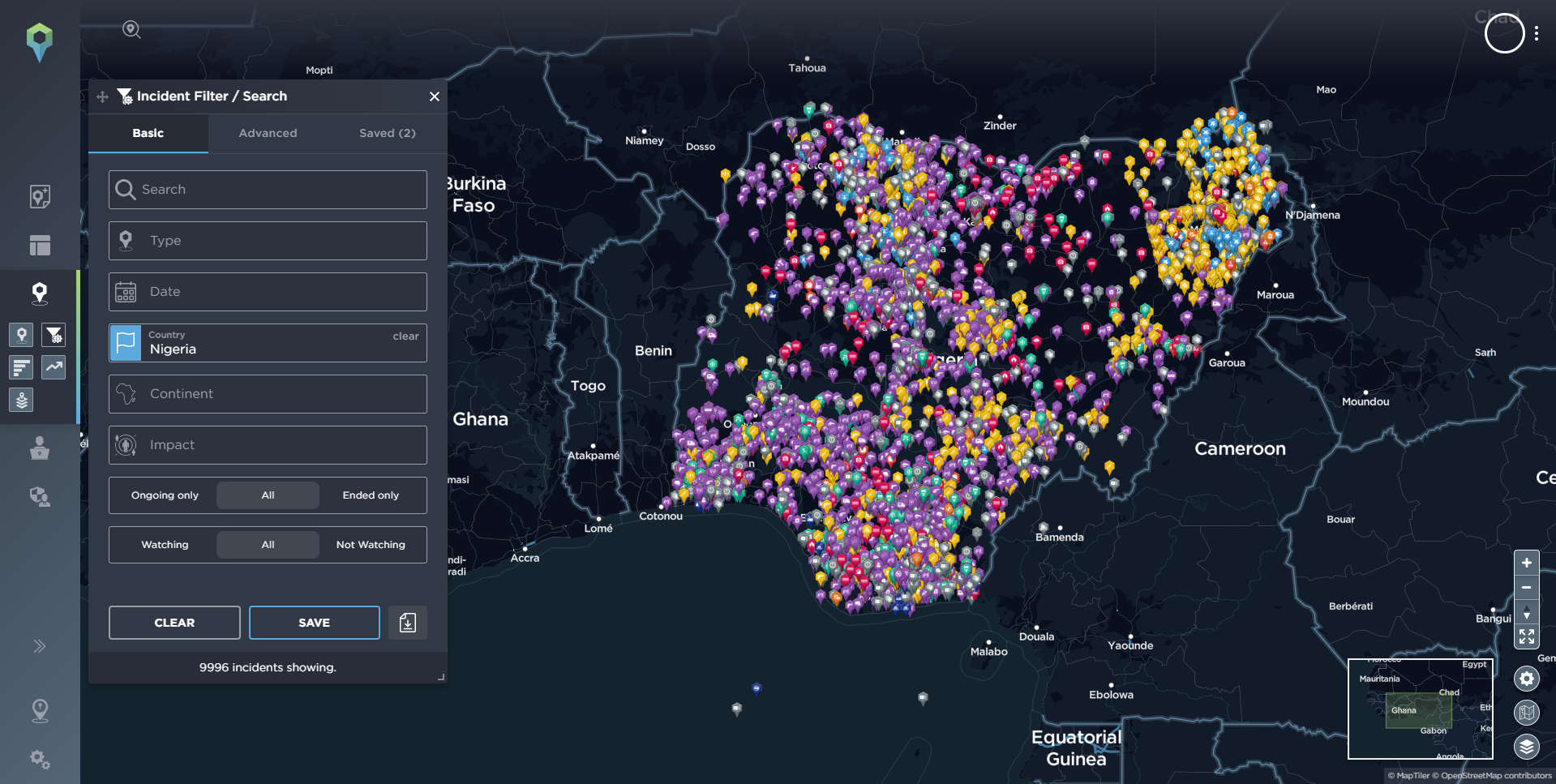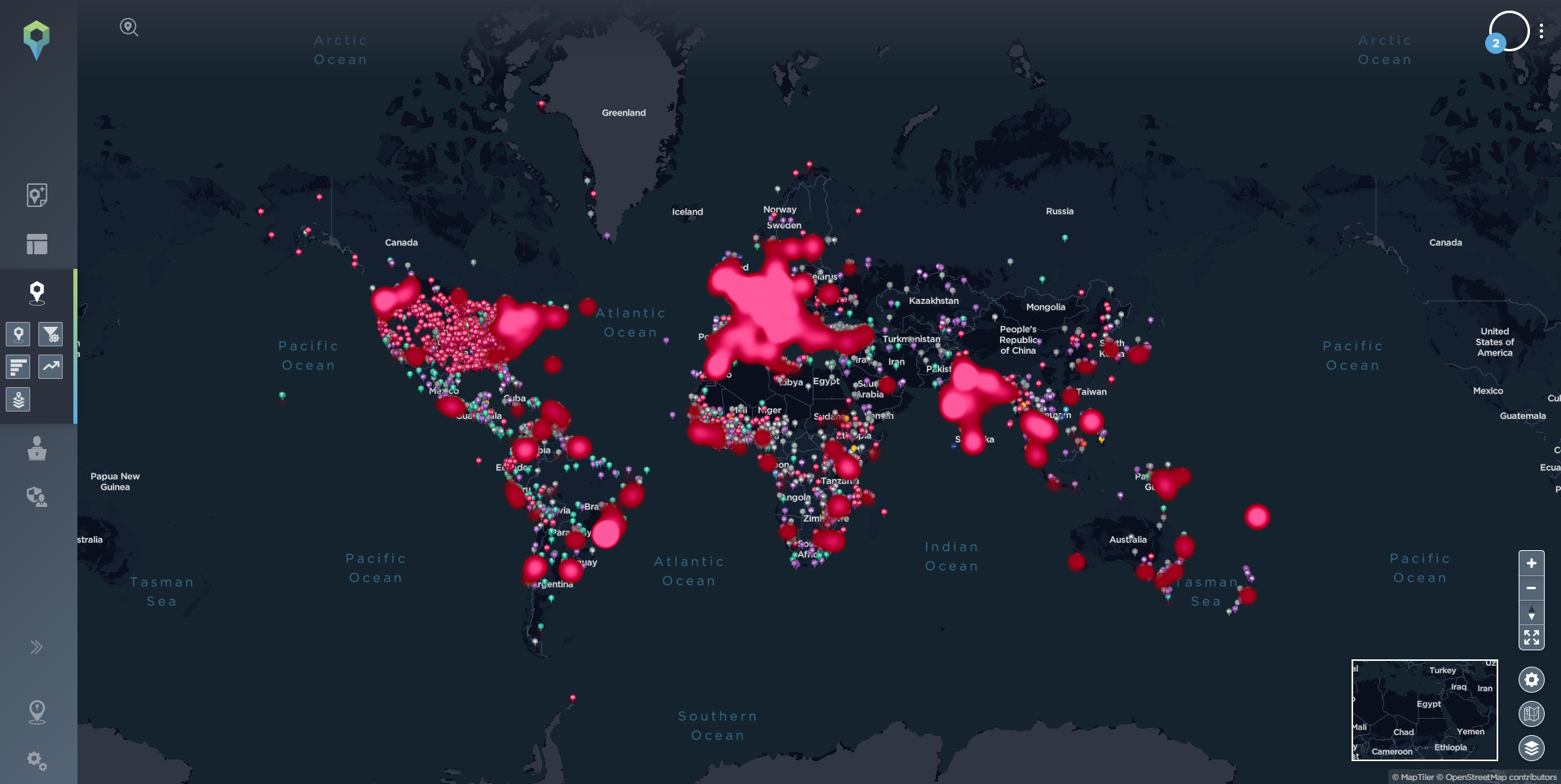Extinction Rebellion in 2021: What is the current state of the group?
Following another wave of Extinction Rebellion actions in August 2021, an exploration of the actions of the group, the industries they’ve targeted, and what we might see from them in the future.
Extinction Rebellion in 2021 is a more sophisticated group than the one first established in 2018, with its targets evolving over time to include not just disrupting the government, but instead targeting whoever is seen as funding or contributing to the problem. We now see a wide range of multinational companies across a number of sectors being targeted by the group. The number of affiliated activist groups has also expanded exponentially, thanks to a decentralised nature that allows anyone to claim affiliation to Extinction Rebellion. At the same time, however, the number of people involved in their most recent protests appears to have diminished. The ‘August Rise Up’ week of protest in Germany, and the two week ‘Impossible Rebellion’ in London – both taking place in August 2021 – saw lower numbers of participants and arrests than expected compared to levels seen in 2019.
This report will look at the current state of Extinction Rebellion in 2021, with a brief introduction to the background of the group, the industries now being targeted by direct action, the latest wave of protests in August 2021, and finally a look at the potential future of Extinction Rebellion.
An introduction to Extinction Rebellion
Extinction Rebellion was established in May 2018 in the United Kingdom with three aims:
- Government must tell the truth by declaring a climate and ecological emergency, working with other institutions to communicate the urgency for change.
- Government must act now to halt biodiversity loss and reduce greenhouse gas emissions to net-zero by 2025.
- Government must create, and be led by the decisions of, a citizens’ assembly on climate and ecological justice.
The group has been active since then, and has affiliations with groups that have since formed and that use similar branding, including the likes of Animal Rebellion, Ocean Rebellion, Christian Climate Action, among other groups with more niche focuses among the large climate change cause. The group’s decentralised nature allows for local groups to organise their own protests, and for anyone who pursues and adheres to the principles of the group, including non-violence, to claim to do it in the name of Extinction Rebellion.
Over the last three years, the actions of Extinction Rebellion and affiliated groups have seen the likes of oil and gas companies, insurance companies, financial institutions, and multinational companies become the targets of the groups’ protests to demand action be taken to combat and attempt to reverse the impacts of climate change.
The Extractive Sector
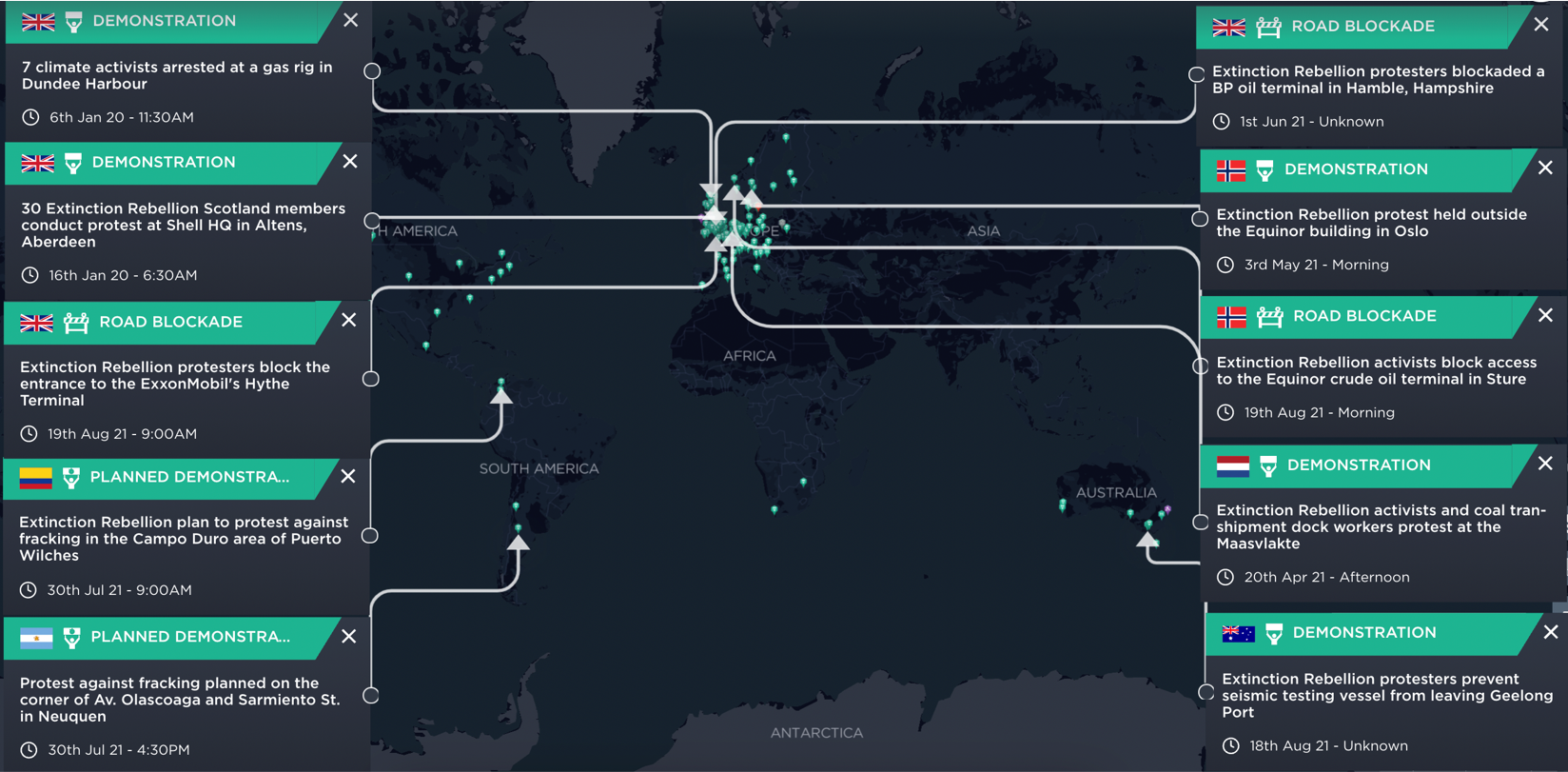
Protests by Extinction Rebellion have included both static protests outside extractive sector companies, as well as direct action, such as blocking oil and gas terminals or ports where ships belonging to the companies depart from. While the group is not as present in the Global South, there have been some protests in both Colombia and Argentina against fracking. However, most protests against extractive sector companies by the group remain in North America and Western Europe.
The Financial Sector
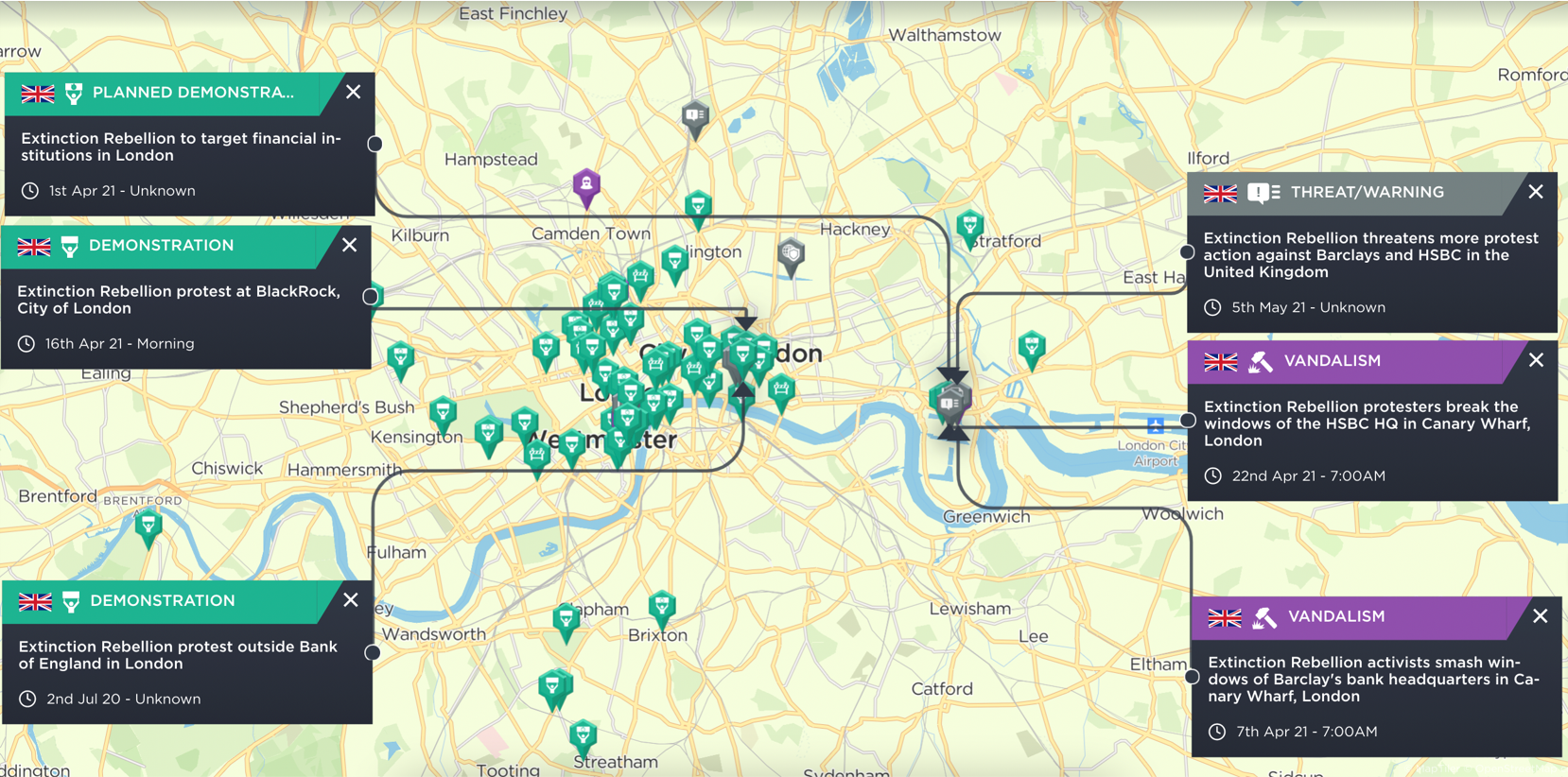
As the hub of the financial sector in the United Kingdom, London has seen the majority of protests targeting financial institutions within the country. Areas such as the City of London and Canary Wharf have been the focus of the group’s efforts in putting pressure on banks to stop financing fossil fuel projects. The last two years has seen a variety of activity, including the vandalism of windows at certain banks like HSBC and Barclays. While efforts against the financial sector have been concentrated on London, small scale localised protests have also been recorded at bank branches across the UK.
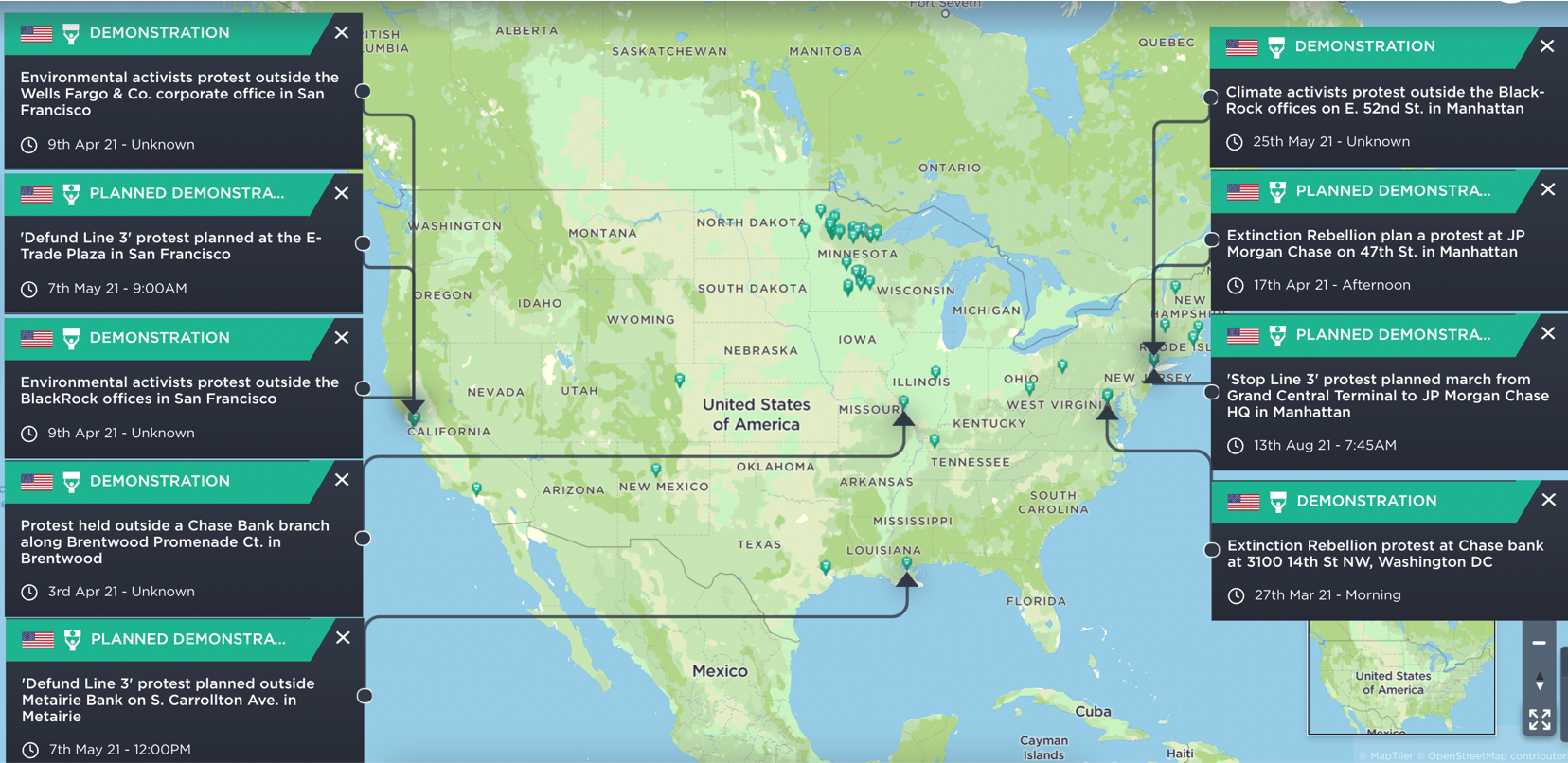
The targeting of financial institutions by Extinction Rebellion is not unique to the U.K., and the group has taken part in similar protests, along with other groups fighting for action against climate change, in the United States, where the targeting of banks and investment companies has been a large part of the protests against Enbridge’s Line 3 pipeline replacement project in Minnesota. Banks such as JP Morgan Chase, Bank of America, and Wells Fargo & Co. have been the sites of protests in major financial hubs like New York City and San Francisco, as well as at branches in smaller cities across the United States.
The Press
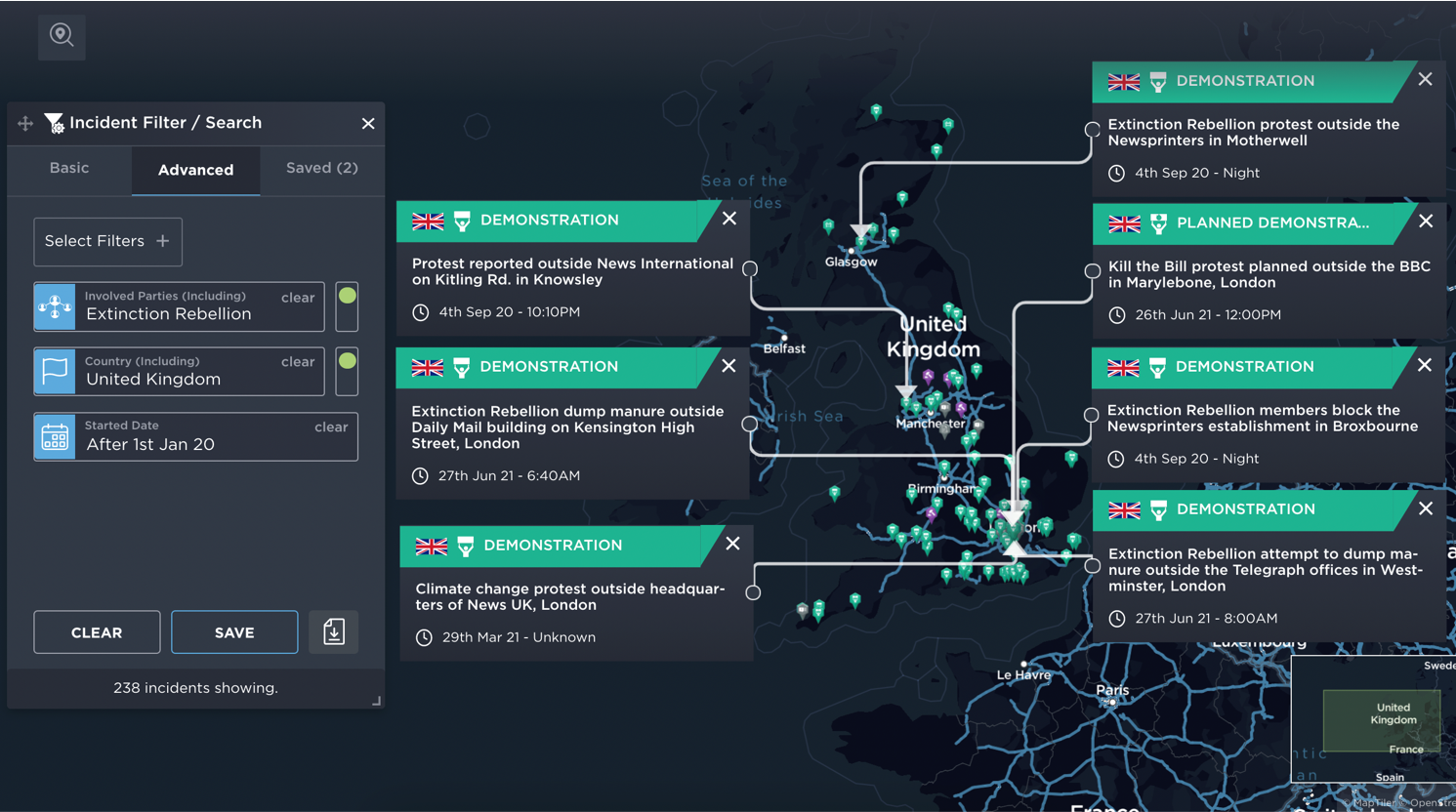
According to a report by the Media Reform Coalition, 90% of the UK-wide print media is owned by three companies – Reach Plc., News Corp, and DMG Media. That number has differed based on source, with another saying that four billionaires own 68% of the UK’s print-media, but regardless of the true figure, Extinction Rebellion, in the UK, has primarily targeted these companies on several occasions, including in September 2020 when activists blocked several printing presses owned by News Corp in Knowsley, Broxbourne and Motherwell, causing significant disruption in the delivery of newspapers. The protest was described by the newspapers owned by News Corp and others as an “attack on all the free press”, while described by some government officials as an “attack on democracy”. Protests targeting the headquarters of these media companies were also held in June 2021, where dozens of activists were arrested after dumping manure outside the offices of the Daily Mail, while trying to do the same outside the Daily Telegraph.
The group’s targeting of the media is against what they see as a corrupt press which puts profit over truth, especially when it comes to reporting on climate change. Activists have complained of a lack of reporting or an untruthful reporting about the climate crisis, as well as rhetoric from newspapers used to divide people.
August 2021 - a renewed wave of protests
Recently, during the month of August 2021, several weeks of action by Extinction Rebellion chapters were announced.
Protests such as the ‘Nordic Rebellion’ in Norway, ‘August Rise Up’ in Germany and Netherlands, and the ‘Impossible Rebellion’ in the UK took place over a number of weeks, causing widespread disruption.
Nordic Rebellion
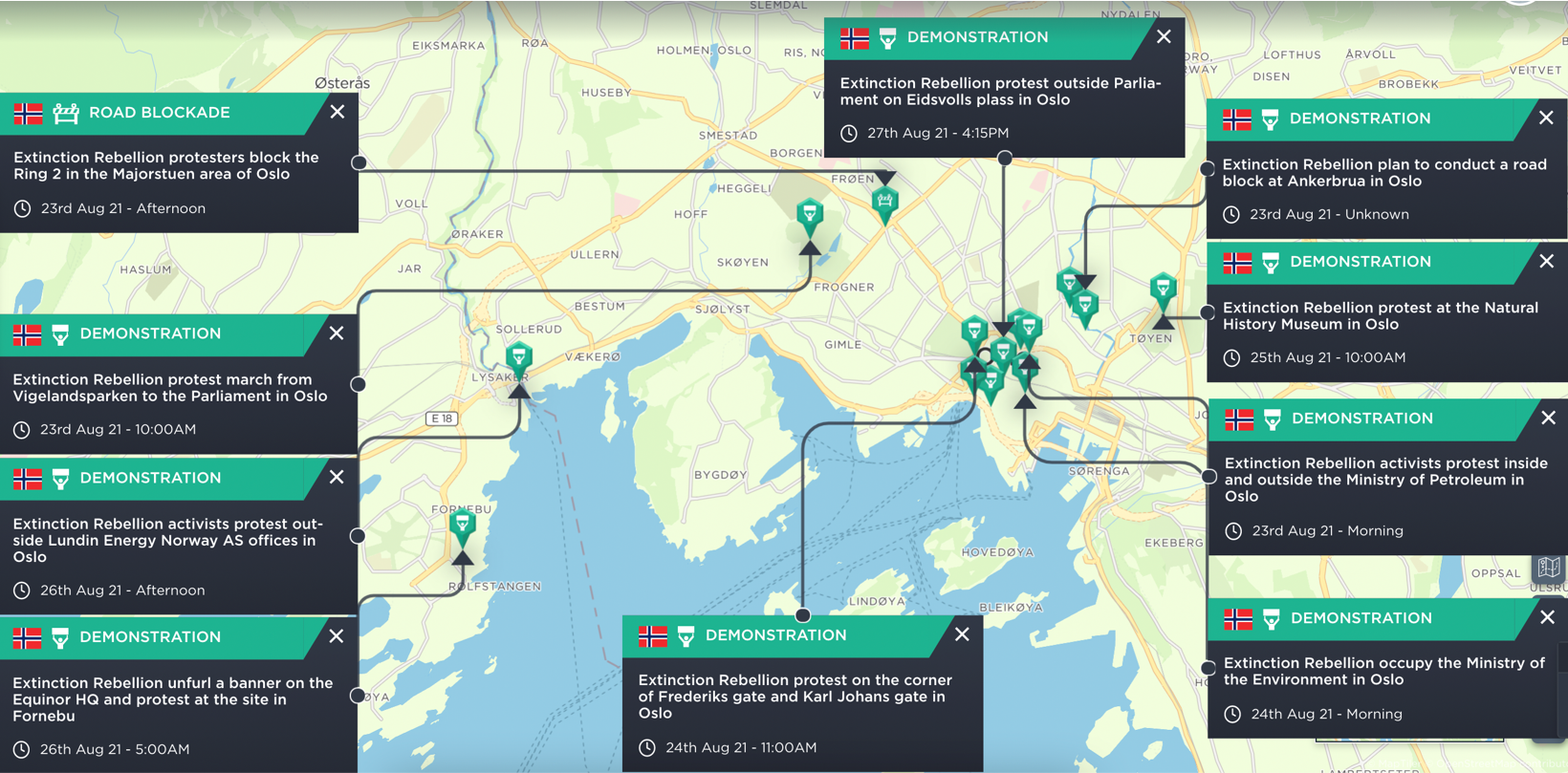
The ‘Nordic Rebellion’ saw protest actions being taken by the group throughout Norway between the 21st and 29th August. Several protests were held in the capital Oslo, but also at Equinor’s oil terminal in the municipality of Øygarden. The week of activity comes after the Norwegian branch of Extinction Rebellion had held a ‘Spring Uprising’ in May 2021, which similarly saw protests in Oslo, including at Equinor’s HQ.
August Rise Up
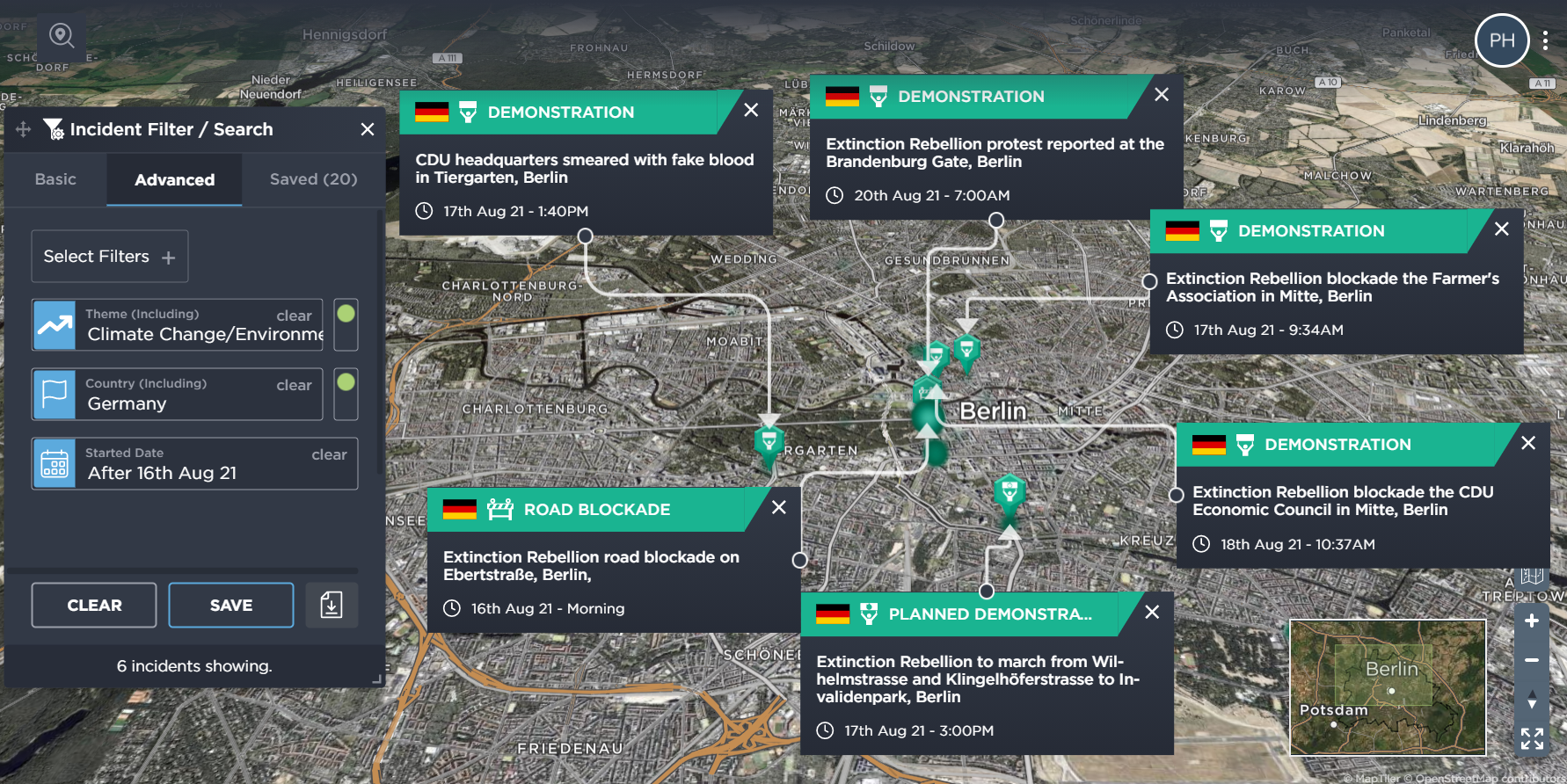
Elsewhere, in Germany, a week of protests dubbed ‘August Rise Up’ began on the 16th August by dozens of groups including Extinction Rebellion, Ende Gelände and Fridays For Future. The protests took place six weeks prior to the German federal election being held on the 26th September. Activists were pushing for the creation of a citizen’s assembly on climate. Actions took place across the country, including at the Brandenburg Gate in Berlin, near the German Parliament. However, the number of participants for the protests were lower than expected compared to levels seen in 2019.
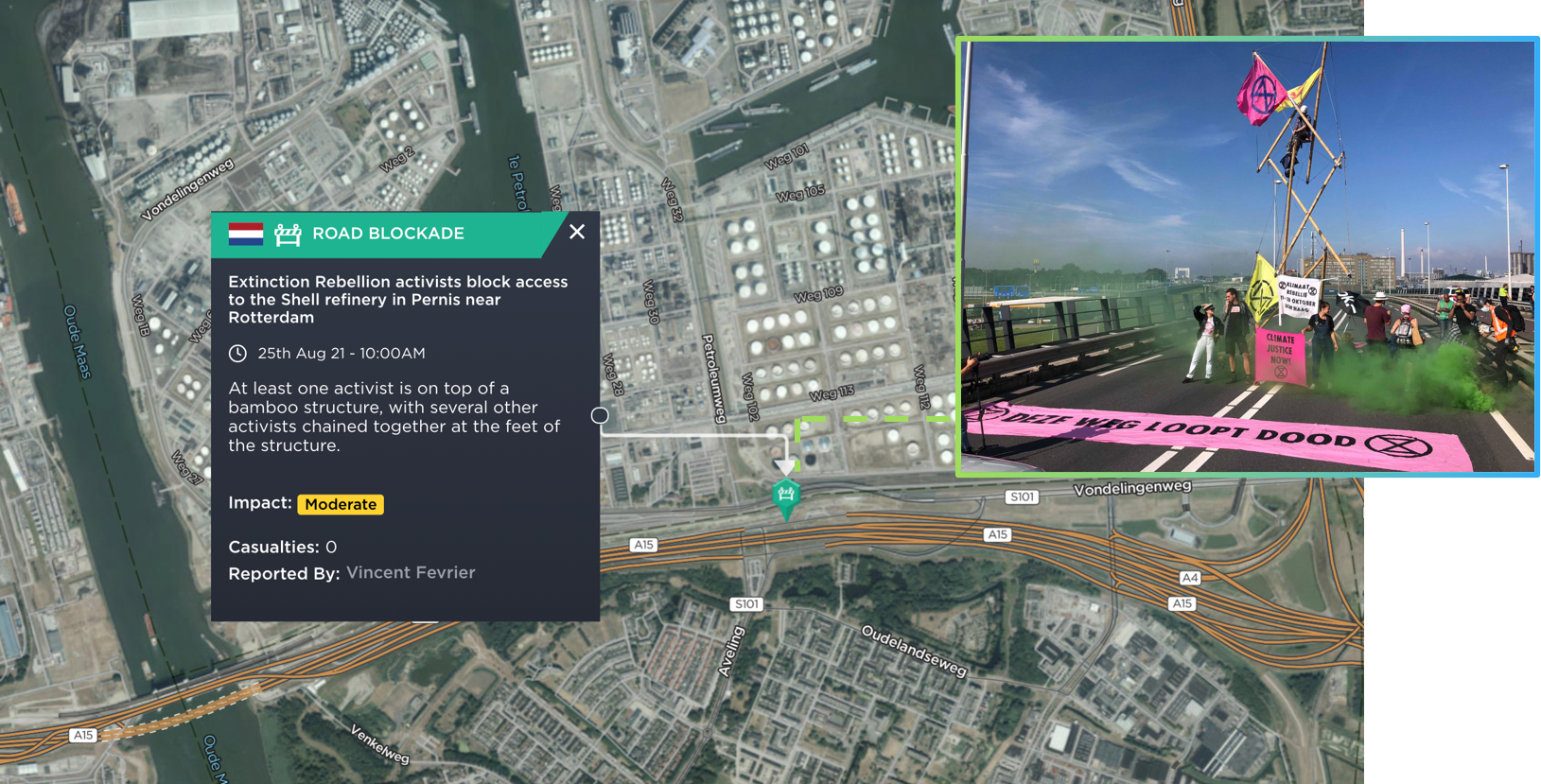
In the Netherlands, on the 25th August, dozens of Extinction Rebellion activists blocked access to the Shell refinery in Pernis, with some blocking the highway using bamboo structures we’ve previously seen used in the United Kingdom.
Impossible Rebellion
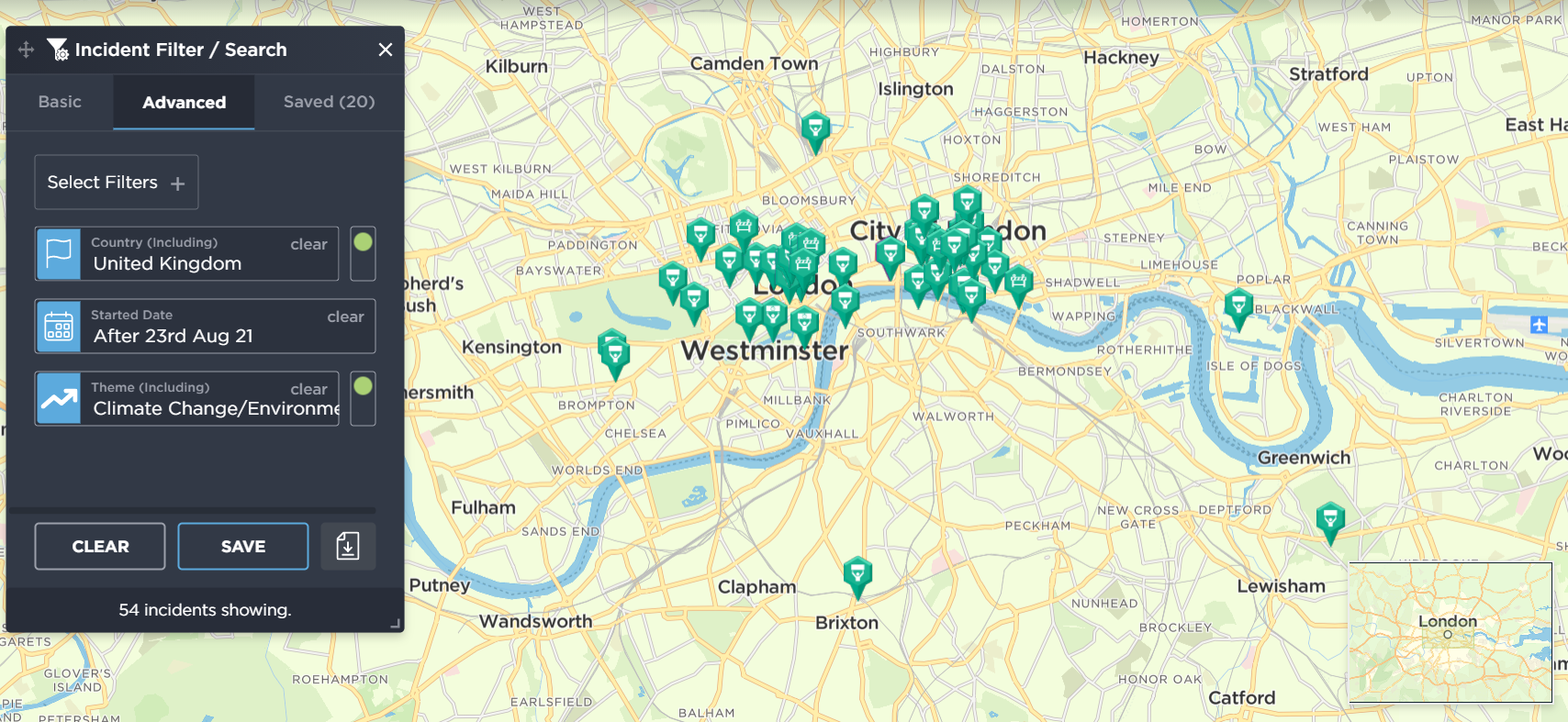
Finally, in London, two weeks of protests were planned to start on the 23rd August through the first week of September. The group’s primary target was the City of London where many financial institutions are located, and who have previously been targeted by the group. In addition to financial institutions, the City of London also has insurance companies, such as Lloyd’s of London, who have been targeted in the past for insuring fossil fuel projects.
The first days of the protests were heavily concentrated in the vicinity of Covent Garden, Soho, and Westminster, where activists blocked roads using homemade structures, such as a giant pink table, as well as through direct action protests such as chaining themselves together inside PVC pipes, requiring emergency services to be deployed to handle the extraction. Protesters targeted several government buildings at the time, including the HMRC and the Department of Business, Energy and Industrial Strategy.
While government buildings were targeted, several businesses were also part of the targets in the first few days. On the 24th August, several activists protested outside Selfridges on Oxford Street in Mayfair, with some gluing their hands to the window display. Additionally, on the same day, a group of Animal Rebellion activists occupied the McDonald’s in Leicester Square, again with some gluing their hands to the windows inside. The McDonald’s has previously been the site of occupations by the group in the Spring of 2021, demanding the company transition to a plant based food system.
Later in the first week, on the 27th August, activists launched the ‘Blood Money March’ targeting a number of financial institutions in the City of London. The march led to vandalism targeting the likes of Standard Chartered Bank, Guildhall, as well as law firms Debevoise & Plimpton LLC and Maples Group. Finally, paint was poured outside the London Stock Exchange before the intersection outside Mansion House underground station was blocked with bamboo structures until the early hours of the next morning.
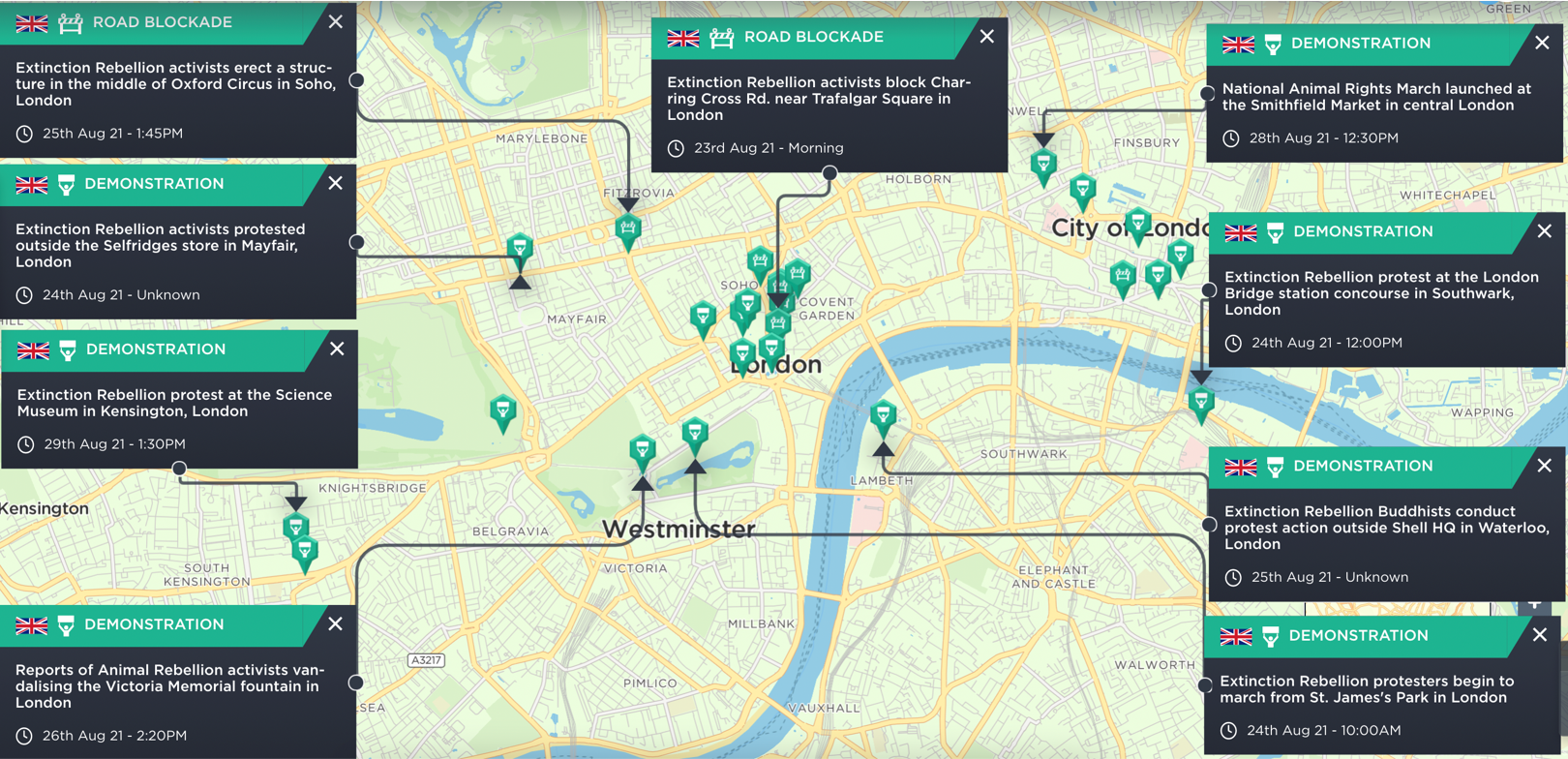
A selection of Extinction Rebellion incidents in London during the first week of protests between 23rd and 29th August. Incidents primarily concentrated in Covent Garden, Soho and the City of London.
The second week of protest actions started with significant disruptions, including blockades on Tower Bridge on 30th of August and on London Bridge on the 31st August. The blockade on London Bridge was said to have turned violent, with police using batons to break into the bus the protesters were blocking the road with. The 30th August also saw the likes of JP Morgan Chase bank being targeted with protests in Blackfriars, London.
Continuing with disruptive tactics that characterised protests early during the second week, on 31st August, at least two separate protest marches were held. Protesters blocked the junction south of London Bridge but were prevented by police from occupying London Bridge itself. Protesters later dispersed into smaller Affinity Groups (civil disobedience support groups) around the Southwark Bridge Area. A second group of so-called “pram rebellion” protesters gathered at Parliament Square to march to Trafalgar Square. Some protesters locked themselves outside Downing Street.
During 2nd and 3rd September, protesters marched into the City of London from gathering points including Tate Modern and St Paul’s Cathedral. Banks were the principal targets of protesters, with protesters stopping at a number of banks during the protest march – protesters occupied the Bank Junction outside the Bank of England to demand a meeting with the Governor of the Bank of England, while protesters also stopped at Toronto Dominion, HSBC (Moorgate branch), Lloyd’s of London and Blackrock Investments. HS2 protesters also gathered at the offices of Marsh, while on 3rd September, a die-in protest was held at JP Morgan (Canary Wharf).
On the final day of protests, 4th September, protesters began their march from Trafalgar Square towards Hyde Park to mark the end of the two-week impossible rebellion civil disobedience campaign. A small group of protesters broke off from the march and marched through a number of roads in the Mayfair, King’s Cross, Fitzrovia and Soho areas.
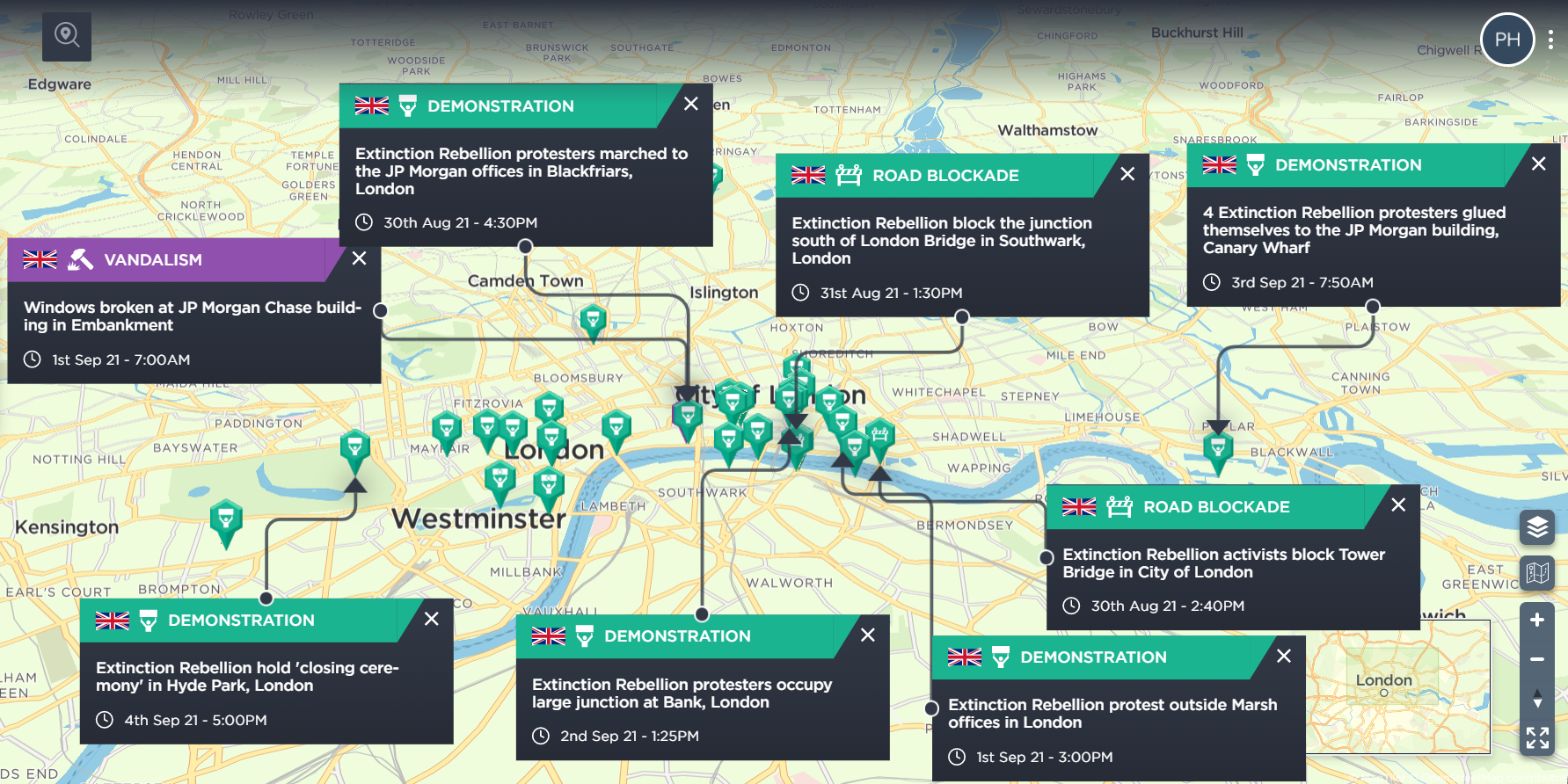
A selection of incidents from the second week of protests between 30th August and 4th September
As with the August Rise Up protests in Germany, reports state that the Impossible Rebellion protests attracted smaller crowds than expected. The Guardian has reported that the number of arrests decreased from 1,130 and 1,768 in Extinction Rebellion’s action in April and October 2019, to 483 people arrested in connection with the Impossible Rebellion protests, suggesting that, “even the most committed activists were fewer in number”. Police appear to have cracked down on protests swifter and more severely than previously, not allowing the group to create focal points for protests, and minimising the opportunity for casual visitors to take part.
The Future of Extinction Rebellion
The IPCC 2021 Report
In August 2021, less than two weeks before the Impossible Rebellion protests began, the Intergovernmental Panel on Climate Change (IPCC) released its sixth Assessment Report (AR), published every six to seven years. As scientific tools and methods evolve over time, scientists are able to improve their predictions on the state of climate change and what the future holds for weather and climate extremes.
Several key conclusions came out of the report, including:
‘It is unequivocal that human influence has warmed the atmosphere, ocean and land. Widespread and rapid changes in the atmosphere, ocean, cryosphere, and biosphere have occurred.’
‘The scale of recent changes across the climate system as a whole and the present state of many aspects of the climate system are unprecedented over many centuries to many thousands of years.’
‘Human-induced climate change is already affecting many weather and climate extremes in every region across the globe. Evidence of observed changes in extremes such as heatwaves, heavy precipitation, droughts, and tropical cyclones, and, in particular, their attribution to human influence, has strengthened since AR5.
The Potential Impact on Extinction Rebellion
The recent publication of the IPCC report will likely lead to environmental groups such as Extinction Rebellion to take more frequent, longer, and bolder actions to push businesses and governments to take action towards the threat of climate change. Social media channels show the group’s discontent with the lack of mainstream reporting on the conclusions of the report, criticism which has been ongoing over the years due to the perceived overall lack of coverage on climate change.
Early protests in the group’s history focused on pushing the message out through disrupting the government, wanting the government to declare a climate emergency. However, over the years, actions have evolved to become more disruptive, and to target more than the government, but whoever is seen as funding or contributing to the problem. It is likely that protest actions, such as those in August 2021, will continue to target large multinational companies in the extractive sector, as well as financial and insurance institutions working with companies involved in the extractive sector. Businesses undertaking projects that have a negative impact on the environment, such as those involved in the HS2 rail project in the United Kingdom, may also be targeted. The scope and breadth of protests are likely to expand further to showcase the urgency and scale of the climate crisis.
Extinction Rebellion will likely continue to be primarily active in Western Europe, North America, Australia and New Zealand, particularly in capital cities where headquarters of such companies are located, as well as large cities where significant operations may be held. As we’ve seen with other protests, particularly those towards the financial sector, protests may also take place at branches of those banks in smaller cities, the goal being to cause disruption at a wider scale. While protests have been disruptive in the form of sit-ins and small scale vandalism, they have thus far not been violent.
However, continued inaction, or perceived inaction, has the potential for some protesters to take more radical action, particularly as deadlines set by scientists to reverse some of the human impacts of climate change pass. The decentralised nature of the group and the autonomy afforded to local groups may lead to reputational damage were any smaller group linked to more radical actions. Additionally, the larger Extinction Rebellion movement or local chapters are likely to join other protest causes that may be gaining traction in order to share their message and how it relates to their cause.
Further, the apparent decrease in numbers seen in August’s protests, coupled with an increase in severe police crackdowns on their actions, may cause a rethink in Extinction Rebellion tactics. Diminishing returns from their current actions may lead to more drastic actions employed by the group, with the Guardian quoting Jayne Forbes, an Extinction Rebellion activist and former Green Party chair who took part in the Impossible Rebellion protests, as saying, “It’s interesting how we are going to progress it now. I do think we will have to go to another level to get the government to notice.” It is also possible that the group’s actions become more fluid, and more based around local activist groups that have formed over the recent years – these groups have already morphed into mutual aid networks, and it is possible that a more centralised approach to organising coordinated local level activism might be seen in the near future.
Finally, the 2021 United Nations Climate Change Conference (COP 26) is scheduled to be held at the SEC Centre in Glasgow, Scotland between the 1st and 12th of November. The conference will likely be the target of Extinction Rebellion and other environmental activists in order to put pressure on not only the UK government, which holds the presidency for the event, but on all participants. The event comes on the heels of the G7 Summit which was held in Cornwall in June, and saw several protest activities by Extinction Rebellion in the area.
Intelligence Fusion’s analysis of Extinction Rebellion is based on our day-to-day monitoring of protests and activism, part of our wider monitoring of security threats and risks to business. We track Climate Change Activism as one of a number of ‘Themes’ on our threat intelligence platform, allowing our clients to quickly and easily filter for the latest incidents and track the pattern of activity.
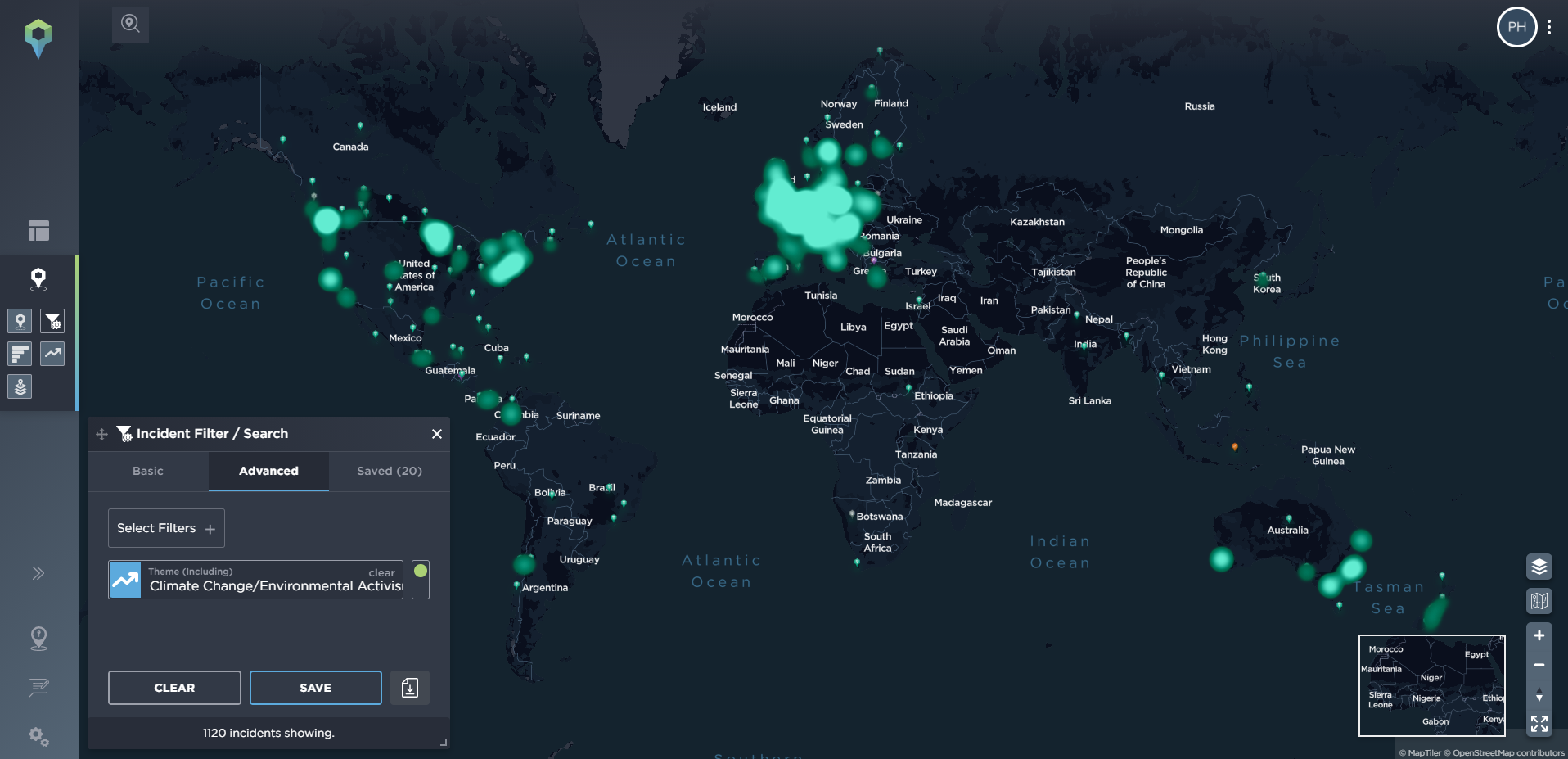
Incidents in the Climate Change/Environmental Activism theme on the Intelligence Fusion platform, with a heatmap showing the areas of highest protest activity
For further information about how we populate the platform and track the latest incidents, get in touch today.
Report put together with additional input from Viraj Pattni and Philip Buckingham.
